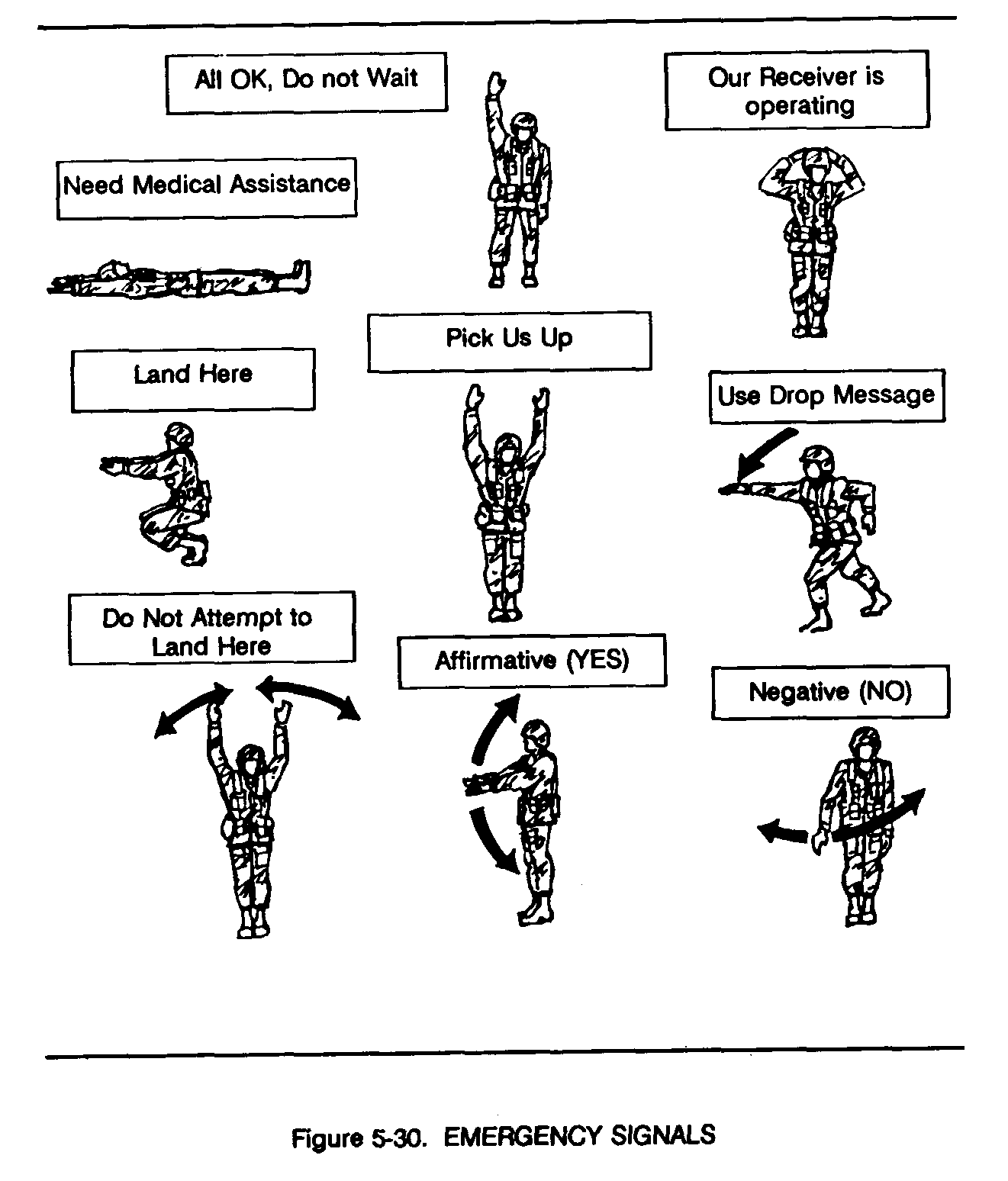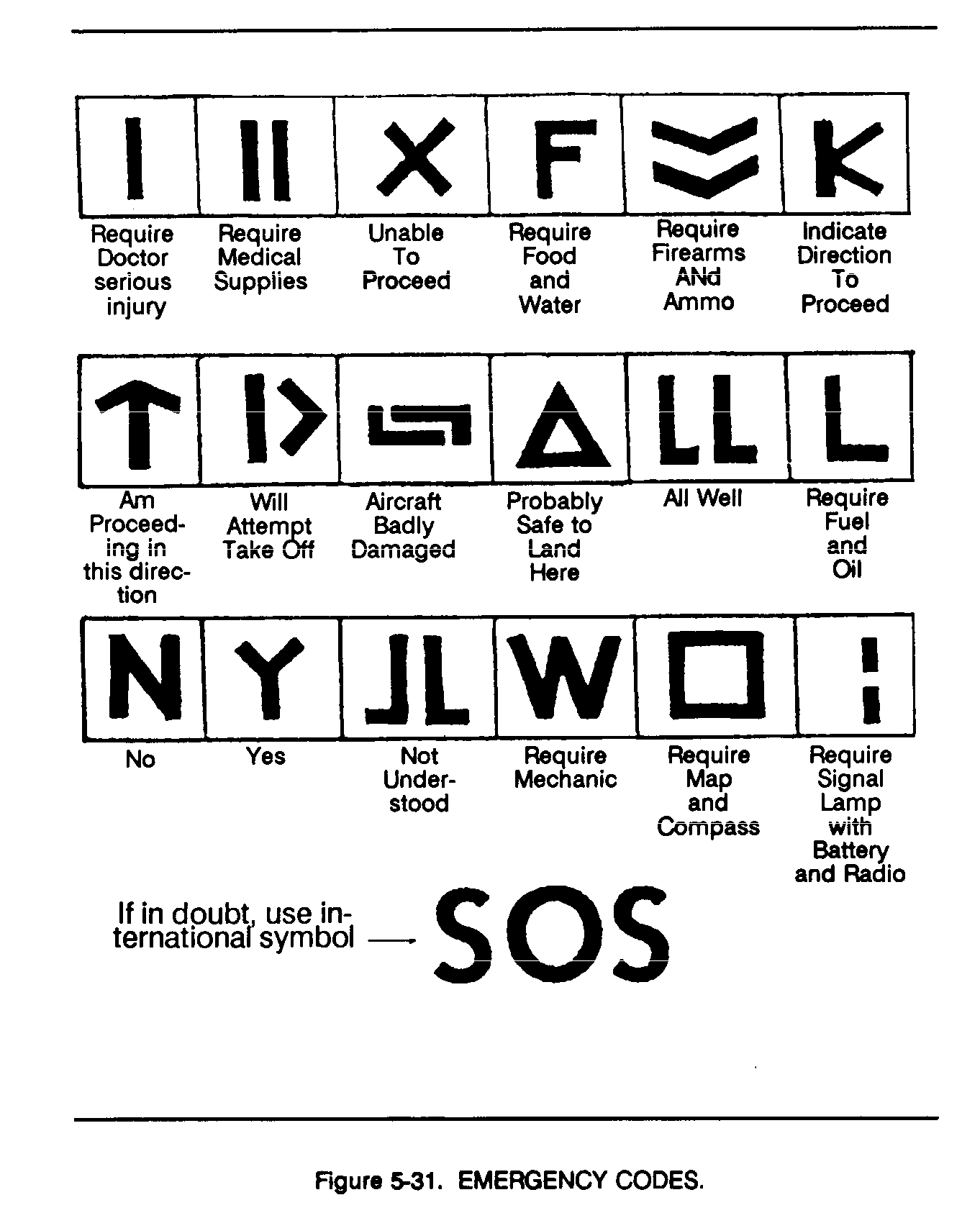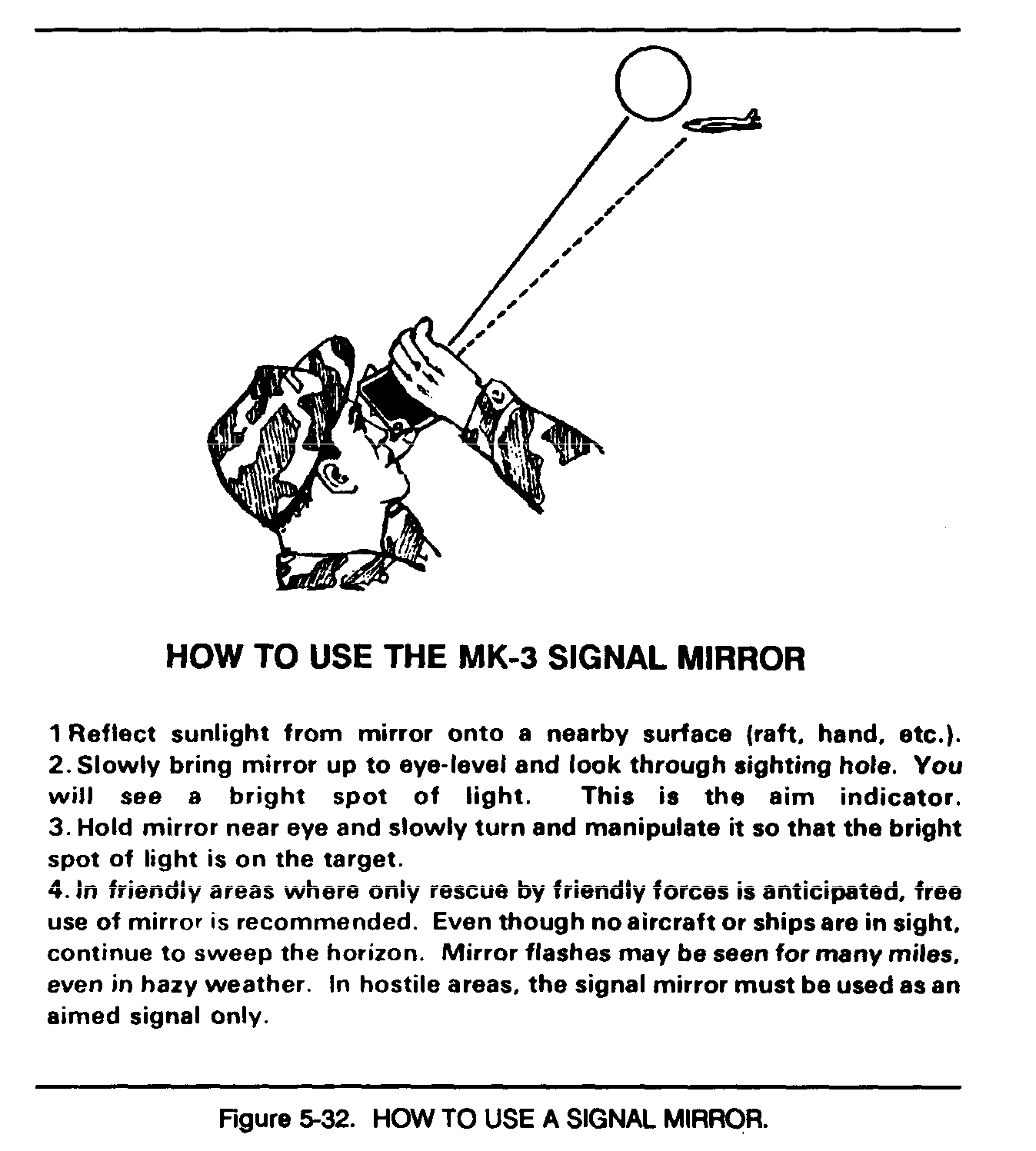5-5. Ground-to-Air Emergency Signals and Codes
a. Two Methods. Aviators have developed two methods of transmitting emergency messages once a pilot's attention has been obtained.
b. Emergency Signals. The body can be used to transmit messages. The individual stands in an open area to make the signals. He ensures that the background (as seen from the air) is not confusing, goes through the motions slowly, and repeats each signal until it has been understood (Figure 5-30).

c. Emergency Codes. The symbols for these codes may be constructed from any available material that contrasts with the background; for example, strips of parachute canopy, undershirts torn into wide strips, rocks, sticks, and foliage stripped from trees. Once laid out, these signals (codes) are semipermanent (Figure 5– 31).

5-6. Signaling With Mirrors and Strobes
a. Mirrors. These are used to get the attention of an aircraft pilot during the day. Their use requires good visibility and little or no cloud cover in order to reflect the sun. Mirrors can also be used to transmit messages, if signals have been arranged. The MK 3 signal mirror is designed for use as a signal device. Instructions for its use are printed on the back of the mirror (Figure 5-32).

b. Strobes. These can be used at night to identify positions. If prior coordination has been conducted with supporting aviation units, strobes may also be used to signal pilots. In order to reduce detection when used, strobe lights should be placed in holes so they can only be viewed from above. Strobes with infrared covers can be used if there has been prior coordination with the aircrew. Strobes are ordered using the nomenclature Distress Markers.






